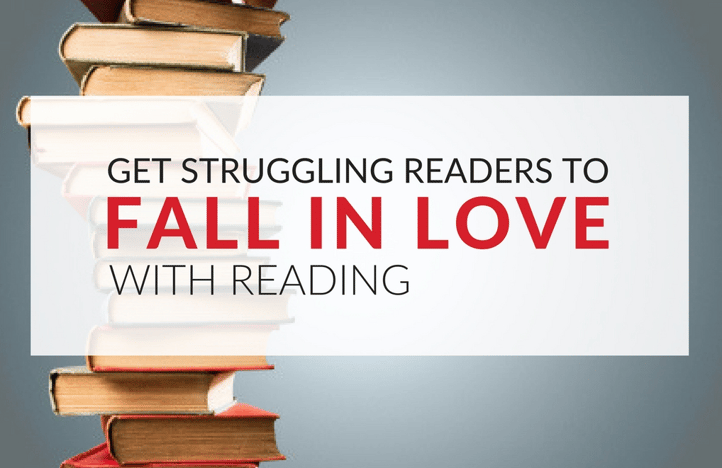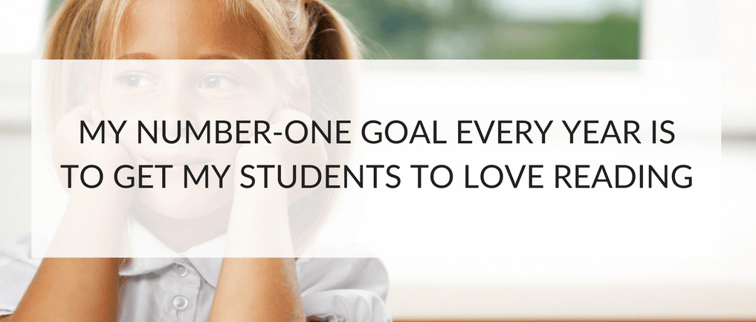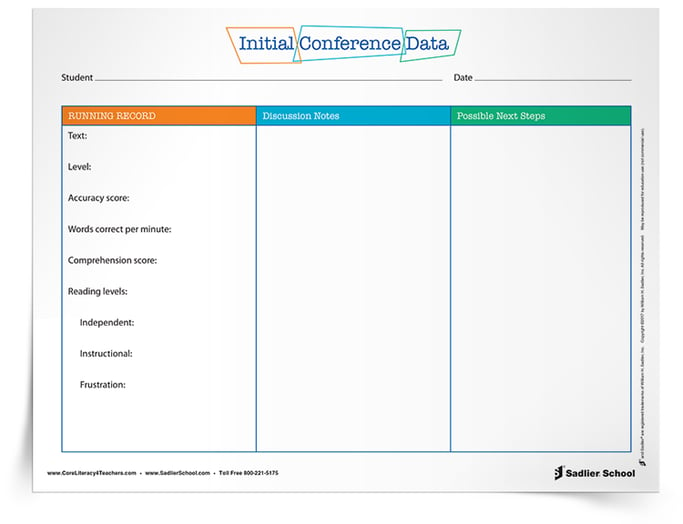April 18, 2017 CL Teaching Strategies Pro Reads, CL Teaching Strategies Notice & Note, ELA PD - Literacy, ELA K-5, ELA Focus - Reading, ELA Resources - Assessment, Core Literacy
How to Get Struggling Readers to Fall in Love with Reading
By: Erin Lynch
After 17 years of teaching and more than 20 years of having been a student, one thing that never seems to change is that students love to get their teachers off-topic and talking about themselves.

I will never forget my Grade 5 teacher sharing her upcoming wedding plans, my Grade 6 teacher talking about her new baby, or my adjunct graduate school professor confiding the struggles of having five children and a full-time job while also teaching a college course. I hung on their every word.
Ask me what I learned academically those years and I couldn't tell you, but to this day I still remember the color of the bride's maid dresses worn in my Grade 5 teacher's wedding.
As I have observed when my own students bombard me with personal questions, not much has changed in that respect. The moment I refer to anything personal in connection with a text I am reading with my students, their heads perk up and suddenly I have everyone's attention.
I guess anything is more interesting to them than schoolwork!
A personal anecdote that I share every year with my students—and it’s one that really seems to hit home for them—is that when I was a young child and an adolescent I hated reading. In fact, I did everything I could to avoid reading.
This is always shocking to my students because, after all, I am a reading teacher.
I explain to them that the reason I am a reading teacher is because I do not want anyone to miss out on all the great books that I did as a child. It was not until I was in college that I became an avid reader. Specifically, after I took my first children's literature course I realized all the wonderful books I hadn’t read when I was younger.
I guess you could say that Number the Stars by Lois Lowry changed my life, because from that point on I read as many young adult books as I possibly could, and I knew right then that wanted to be a reading teacher.
NOTE: I have wonderful Number the Stars Worksheets available for FREE download.

My number-one goal every year is to get my students to love reading. This goal can be particularly difficult to achieve with struggling readers. After all, it is hard to love something that is challenging to you.
So how do you get struggling readers to fall in love with reading?
In this post I share with you the three things that I believe have helped me to foster a love of reading within my struggling readers.
3 WAYS TO FOSTER A LOVE OF READING IN YOUR STRUGGLING READERS
#1 TEXT SELECTION
As I mentioned above, I honestly do enjoy reading adolescent literature, which is very helpful when making text selections. I have read lots of books that I can reference right off the top of my head when planning units, lessons, read-alouds, small group work; when giving independent reading suggestions; and when sharing possible book choices for literature circles.
Students and teachers know they can come to me with any genre or topic and I will have a book suggestion for them. I put a great deal of thought into every text I choose to use or to suggest.
I believe read-alouds are most critical in developing a love of reading with struggling readers.
Any book that I read aloud to my students I either love or I have chosen because the text closely exemplifies the objective I am teaching (when things work out just right it is both). The read aloud is a great way to draw in struggling readers because you have taken away the labor of decoding. The students can listen and enjoy the book without worrying about fluency. The read aloud gives teachers the opportunity to:
-
Expose students to texts that are more challenging than they can read independently
-
Introduce students to new authors and genres
-
Encourage discourse about literature
-
Expand vocabulary
-
Provide practice with comprehension strategies
-
Model fluency
-
Build good reading habits within students
-
Help to grow a community of life-long readers
-
Foster an enjoyment and love of reading
Over the years, I have shared on this blog many favorite books that I have used as read-alouds, as a model for my mini-lessons, during small group work, or as suggestions for independent reading. Be sure to look back at some of my older posts for some great book ideas to use with your students!
NOTE: I have an Interactive Read Aloud Bundle available for FREE download.
#2 TIME TO READ AND SHARE
As the old saying goes, “Practice makes perfect!” This is true whether you are talking about reading, playing a sport, learning a musical instrument, or creating works of art.
I think one of the greatest challenges for any classroom teacher is giving or having the time to allow their students to just read. These days, there is so much “work” and “assessing” involved with reading that students do not often have enough time to simply read for reading’s sake.
The more time kids have to read, the better they will be at it!
Finding extra time in your day to add an independent reading block can be tricky, but sometimes you can make a difference by making minor adjustments to what students are doing when they walk into the classroom at the start of the day, are waiting for recess or lunch, are packing up at the end of the day, or returning from a special. All those extra minutes add up!
If you are an administrator who is responsible for creating the school-wide schedule, find a way to provide your teachers with a large language arts block that allows for daily independent reading. Your teachers and students will thank you for it.
Students need to be provided with time to read and to share what they are reading.
They also need to be given choices.
Choice means the option of genre—novel or picture book, poem or story, magazine or book. digital text or printed text. When students are given a choice they are more likely to be interested and invested in their reading.
#3 INSTRUCTION
Obviously, most struggling readers do not enjoy reading because it is hard for them. The best way to get struggling readers to love reading is by making it easier for them. If readers have access to strategies that make reading less difficult they are more likely to enjoy reading.
Strong literacy instruction is the key to building the foundation for lifelong analytic readers who enjoy reading.
Before beginning instruction, the first step is to determine who your struggling readers are.
Depending on the age and grade level you teach, there should be a wide range of reading assessments at your fingertips (district reading assessments, in-school reading assessments, state assessment data, screeners, and/or running records) to help you identify your struggling readers.
If you are an administrator, providing teachers with time at the end of the school year to discuss students with teachers in the grade level above and the one below is invaluable. This time gives teachers the opportunity to share concerns about students, as well as intervention strategies that might be working with these students, with their future teachers.
After you have identified your struggling readers, it is important to figure out exactly what they are struggling with in reading.
This issue could be oral language, phonemic awareness, word recognition, vocabulary, fluency, comprehension, or writing—or combinations of these. Then, within those categories and through assessment, you be get even more specific about your student needs (i.e., a student struggles with comprehension, but more specifically has problems with summarizing).
Once you have figured out the area of instructional need, it is time to begin planning.
Let me reiterate that strong literacy instruction is KEY to making struggling students lifelong readers. In short, to be successful teachers need to take the following steps:
-
Determine who the struggling readers are with assessments
-
Pinpoint exactly where the reader is struggling. Oral language? Phonemic awareness? Vocabulary?
-
Plan and execute instruction that will support the struggling reader
This blog contains many of the strategies I have used when planning for my students over the years, so take advantage of the work I might have already done for you. Please note that I work mostly with students in Grades 3-5, so many of these instructional strategies are in the area of comprehension and writing about reading.
FREE INITIAL CONFERENCE DATA SHEET DOWNLOAD
Available for download is the Initial Conference Data Sheet. I use this data sheet to organize my thinking after I have completed my first running record on a student. It includes room to include the data collected from the initial running record, discussion notes, and possible next steps. You can use this spreadsheet to organize the data collected on all your students, not just your struggling readers. I hope you find it as useful as I do!
IN SUMMARY
So, how do you get struggling readers to fall in love with reading?
Text selection is critical. Pick out books to share that you love and that you think your students will love. Expose your students to authors that they will want to read more books by.
Give your students time to read. The more they read the better they will be at it, and they will grow to love it.
Finally, provide purposeful instruction. Struggling readers need specific instruction based on their needs. The greater the understanding students have of a text, the greater their chance for developing their enjoyment and love of reading.




